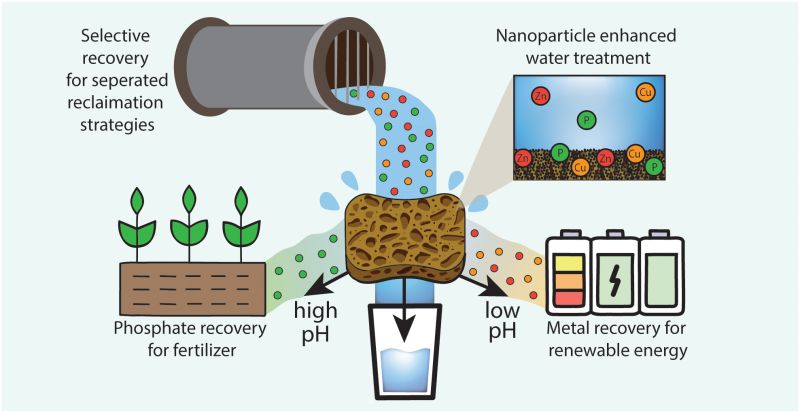
Specialized sponge recycles minerals from stormwater for reuse in agriculture and other industries
Funded by multiple grants from the U.S. National Science Foundation, researchers created a functional sponge that can soak up certain pollutants from water and then release them on demand, presenting a reusable and low-cost solution for cleaning storm runoff while simultaneously recovering valuable metals like zinc and copper, as well as phosphate.
Using surface iron oxide nanoparticles specialized for capturing specific contaminants, the sponge collects the minerals and then discharges them only when triggered by changes in pH, and it can be used multiple times. The findings were achieved by researchers at Northwestern University and published in the American Chemical Society's journal Environmental Science and Technology Water.
"The technology can be used as a universal sorbent or 'catch-all,' or it can be tailored to certain groups of contaminants like metals, plastics or nutrients," says Vinayak Dravid, a research author and Northwestern professor of materials science and engineering. In previous iterations, the sponge material has successfully pulled lead, microplastics and oil from water.
Industrial manufacturing and agriculture, in particular, experience mineral and fertilizer loss due to runoff, leaving valuable nonrenewable resources as pollutants in bodies of water. Those resources include heavy metals like zinc and copper and also phosphate.

Credit: Kelly Matuszewski, Northwestern University
Kelly Matuszewski, doctoral student and first author on the paper, found that lowering water pH flushed out the captured copper and zinc from the sponge. Inversely, raising water pH loosened the phosphates. After five uses of recycling these nutrients, the sponge still worked functionally while yielding water with untraceable levels of those pollutants.
"We can't just keep flushing these minerals down the toilet," says Matuszewski. "We need to understand how they interact and find ways to actually utilize them."
Co-author Dravid has co-founded a startup to commercialize the sponge-based technology with additional NSF support through the Small Business Innovation Research program, which will further develop the material for real-life scenarios.
The team has yet to account for biofilms, clogging or water flow dynamics on the sponge's performance. They plan to explore those in future research while testing the maximum mineral levels the sponge can absorb.
Distribution channels: Science
Legal Disclaimer:
EIN Presswire provides this news content "as is" without warranty of any kind. We do not accept any responsibility or liability for the accuracy, content, images, videos, licenses, completeness, legality, or reliability of the information contained in this article. If you have any complaints or copyright issues related to this article, kindly contact the author above.
Submit your press release